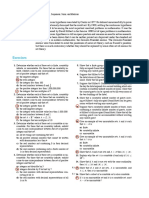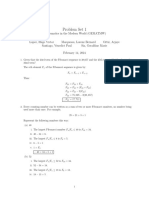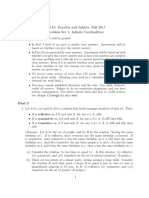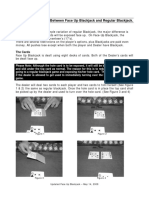0% found this document useful (0 votes)
22 views2 pagesDiscrete Structures Assignment Solutions
The document contains various mathematical concepts and proofs, including cardinality of sets, properties of binary relations, quantifiers, logical equivalences, and bijectivity of functions. It also discusses finite and infinite sets, mathematical induction, and explicit formulas for sequences. Additionally, it provides examples of relations and their properties, as well as solutions to specific problems involving sets and functions.
Uploaded by
shahzaibimtiazaloneCopyright
© © All Rights Reserved
We take content rights seriously. If you suspect this is your content, claim it here.
Available Formats
Download as TXT, PDF, TXT or read online on Scribd
0% found this document useful (0 votes)
22 views2 pagesDiscrete Structures Assignment Solutions
The document contains various mathematical concepts and proofs, including cardinality of sets, properties of binary relations, quantifiers, logical equivalences, and bijectivity of functions. It also discusses finite and infinite sets, mathematical induction, and explicit formulas for sequences. Additionally, it provides examples of relations and their properties, as well as solutions to specific problems involving sets and functions.
Uploaded by
shahzaibimtiazaloneCopyright
© © All Rights Reserved
We take content rights seriously. If you suspect this is your content, claim it here.
Available Formats
Download as TXT, PDF, TXT or read online on Scribd
/ 2





















































































